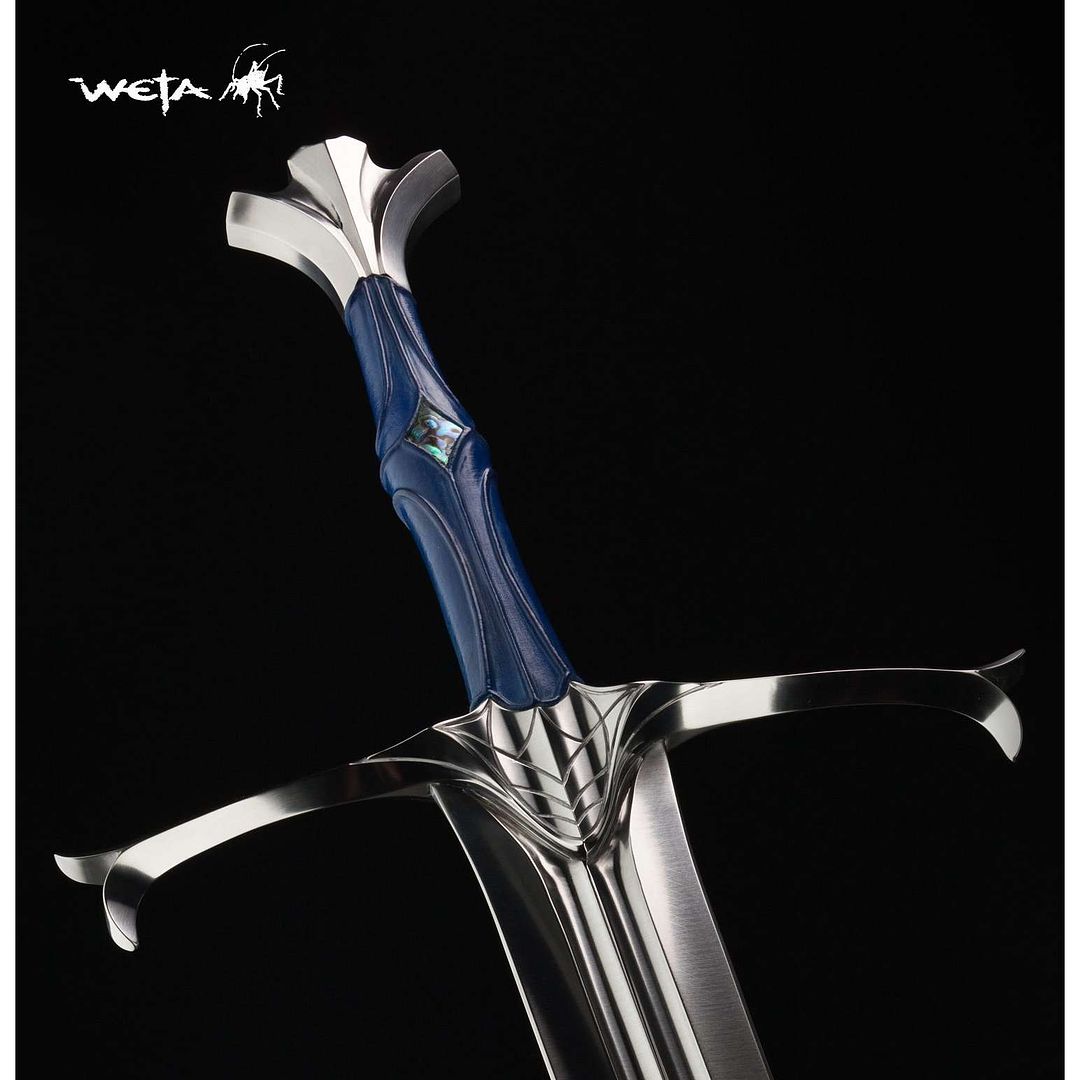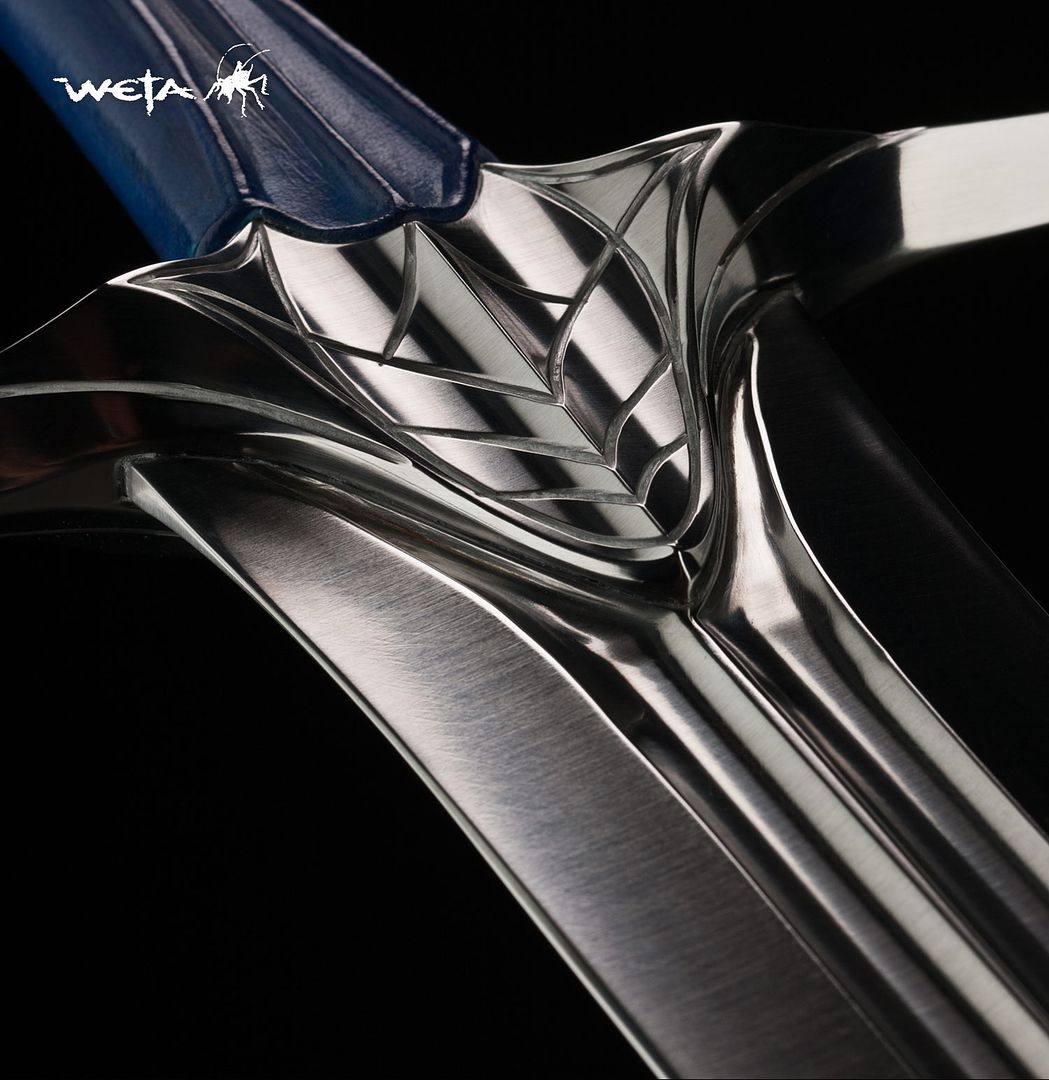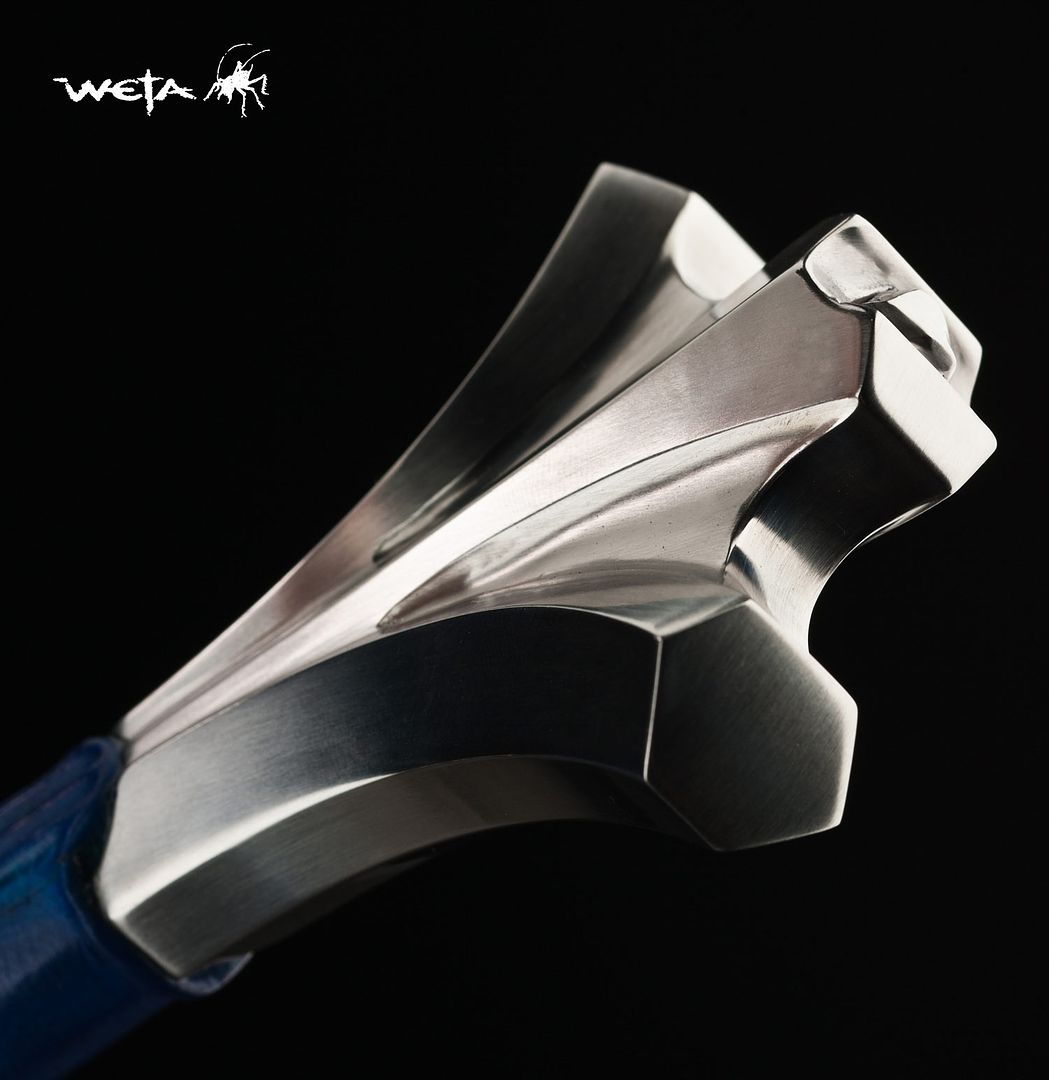Aearil - A Sword by Peter Lyon
Aug 14, 2013 5:47:40 GMT
Post by Jack Loomes on Aug 14, 2013 5:47:40 GMT




Weta's master swordsmith Peter Lyon has made this one-of-a-kind sword exclusively for Weta's customers. Peter joined Weta Workshop in the early days of Lord Of The Rings, and has created all the iconic weapons from the movies - Anduril, Narsil, Glamdring, Sting - all took shape in Peter's smithy. Since then, Peter's work has included Japanese blades for The Last Samurai, fantastical creations for The Chronicles Of Narnia and most recently for Indiana Jones And The Kingdom Of The Crystal Skull.
Blade length: 915mm (36")
Overall length: 1217mm (48")
Weight: 1.94Kg (4 pounds 4 ounces)
Balance point: 71mm (2.8") along blade, measured from the shoulder of the blade
A few words about Aearil by Peter Lyon:
Weta Workshop has made numerous swords for films over the years, and I have had the pleasure and honour to work on many of them, especially the "hero" swords which are seen in close-ups. Apart from being blunt, the "hero" swords have been made as fully functional weapons, using my skills gained over 25 years of sword making to achieve the best combination of weight, balance, flex, strength, fit and finish.
This sword has been made especially for the Weta Cave and Weta's Online Shop to sell to the public. I have been given an open brief to make swords for the shop, based on my own design ideas; so I make swords that are unique and which I would also be proud to own. It is similar to late medieval European longswords, but with design flourishes transform it into a piece of art as well. A longsword is light enough and balanced to be used with one hand, but it can also be used two handed for powerful cutting blows. The blade is broad for much of its length, making for strong cuts, but comes to an acute point for effective thrusts, making this a true cut-and-thrust sword.
The individual parts have shapes and detail lines that blend into each other and continue into the next component, so that shapes continue even as the materials change, and the shapes of all the hilt parts draw the eye towards the diamond shaped bosses in the centre of the grip, filled with polished Paua (New Zealand abalone) shell each side. At the same time there is a strong central line through the hilt and along the blade, emphasising the straight and symmetrical shapes of the sword.
This sword has many nautical features which led me to the name, Aearil, which in Elvish means Gleaming Ocean.
The straight blade is ground from spring steel bar, and has been heat treated to give the best possible combination of toughness and edge hardness. Historically blades were forged into shape and to remove flaws in the steel, but the consistency and high specifications of modern steels mean this is no longer necessary. The bevelled edge is blunted for safety and display, but could just as easily be sharpened for cutting tests. The tang of the blade is strong and wide, and passes through the cross guard, grip and pommel, and is peened over the end of the pommel for maximum strength.
The cross guard is cut from a block of mild steel. From the centre block it projects along the blade and towards the ends, which are split into a fork. This is an unusual feature which I don't recall being used on a sword before. The cross is set onto the shoulders of the blade for extra strength and stability, as was done on medieval European swords to prevent the cross becoming loose and rattling through use.
The grip is made of beech wood, covered with leather. Thin cords under the leather create the designs, and the leather has been carefully tooled to fit into all the shapes created by the cords. The grip was mostly drilled out then fitted by heating the tang and burning out the remaining wood for a tight fit, and finally glued in place. It is a two handed grip; the foregrip is straight to give a strong gripping surface, while the waisted shape of the upper grip encourages the second hand to nestle into the inside curves of the pommel.
The mild steel pommel is also a counterweight for the blade. It is shaped somewhat like a fish tail, with curved and recessed faces to add interesting shapes, and also to remove weight and get the best possible balance for the sword overall. The pommel was set tight onto the tapering tang before the end was peened over.
Source: www.wetanz.com/aearil-a-handmade-sword-by-peter-lyon/

.png?width=1920&height=1080&fit=bounds)